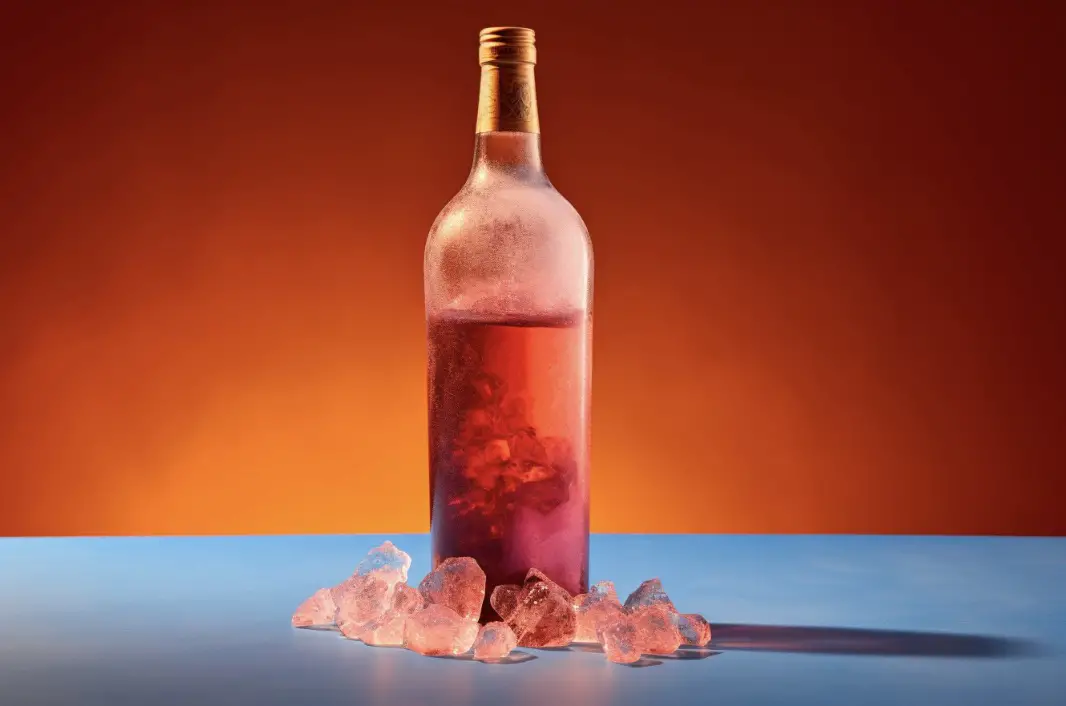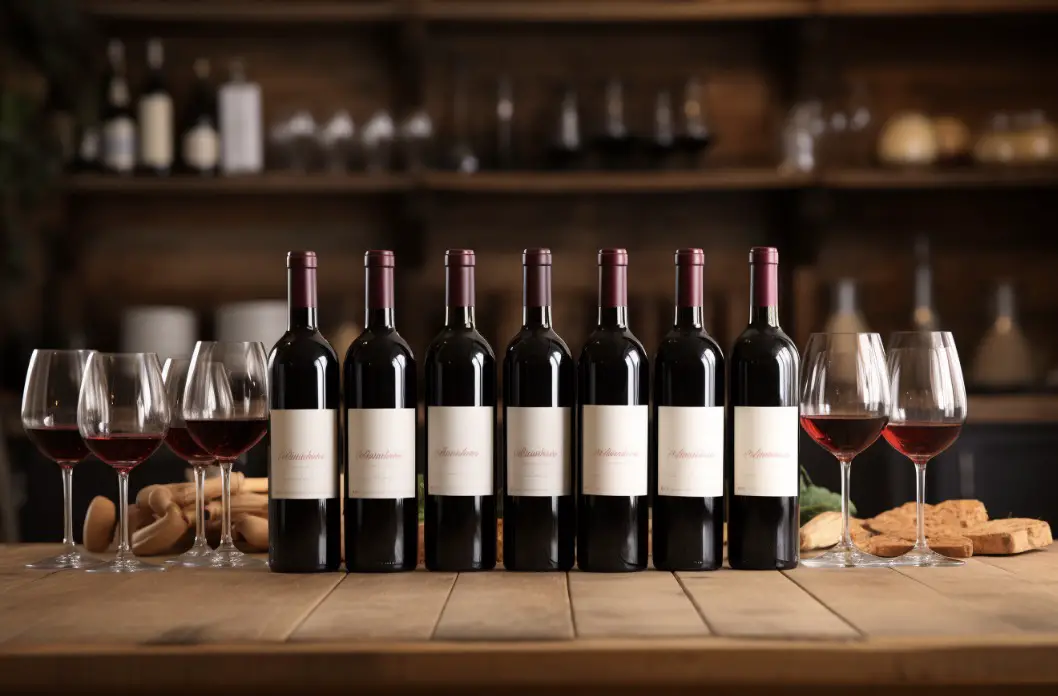How to best unfreeze wine fast? This is a question many wine enthusiasts and home cooks may find themselves asking when they discover a forgotten bottle of wine in the freezer.
Accidentally freezing your wine is not an uncommon mistake, and learning how to properly thaw it can help save the flavor and quality of your vino.
In this blog post, we will explore various methods for defrosting wine quickly, while also discussing how freezing affects the wine and offering some tips for preventing it from happening in the first place.
As an experienced brewer, I have encountered this situation several times and have experimented with different techniques to find the best solution.
How do you fix frozen wine?
Fixing frozen wine can be a bit challenging, as freezing can alter its flavor and texture. However, here are a few steps you can take to potentially salvage it:
1. Thaw the wine slowly: Place the frozen wine bottle in the refrigerator and let it thaw slowly. Avoid using heat sources like microwaves or hot water, as rapid thawing can further damage the wine.
2. Be patient: Thawing wine can take several hours or even overnight, depending on the temperature of your refrigerator. It’s crucial to allow it to thaw completely before assessing its quality.
3. Observe the wine: Once thawed, carefully inspect the wine for any signs of leakage or damage to the bottle. If the bottle has cracked or the cork has been pushed out due to expansion during freezing, it’s best to discard the wine as it may have been contaminated.
4. Assess the quality: After thawing, give the wine a gentle swirl to check if it appears normal. Frozen wine can sometimes develop a hazy appearance or sediment due to the separation of solids during freezing. While this may not affect the taste, it’s a good idea to strain the wine through a fine-mesh sieve or cheesecloth to remove any unwanted particles.
5. Taste test: Pour a small amount of the thawed wine into a glass and taste it. Freezing can alter the flavor and texture of wine, resulting in a potential loss of aromas and a flat taste. If the wine tastes significantly different or lacks the desired qualities, it may be challenging to fully restore its original character.
It’s worth noting that while these steps might help salvage a frozen wine, the quality may still be compromised. Therefore, it’s essential to manage expectations and understand that the wine may not taste as intended.
How freezing affects wine
Before we delve into the methods of thawing, it is important to understand how freezing affects wine. When wine freezes, the water content turns into ice, forcing the alcohol and other components to separate.
This separation can cause the wine to lose its original flavor, aroma, and texture. Though it might not render the wine undrinkable, it could result in a less enjoyable experience.
The Role of Alcohol Content
The freezing point of wine depends on its alcohol content. Generally, wines with higher alcohol content have a lower freezing point, making them more resistant to freezing.
For example, a wine with 10% alcohol content may freeze at around 20°F (-6.7°C), while a wine with 13% alcohol content may not freeze until it reaches 15°F (-9.4°C).

This is important to consider when storing your wine, especially if you live in a colder climate or have limited temperature control in your storage space.
Methods of Thawing Wine
There are several different ways to thaw your wine, but some methods are better than others when it comes to preserving the quality and flavor of your frozen vino. Here are a few methods I have personally tried and their results.

The Refrigerator Method
The refrigerator method is the most recommended way to thaw your wine. Simply move the frozen bottle from the freezer to the refrigerator and let it thaw slowly over the course of 24 hours.
This method ensures that the wine thaws evenly and at a consistent temperature, reducing the risk of damaging the wine’s flavor and structure.
The Cold Water Bath Method
If you need to thaw your wine more quickly, you can try the cold water bath method. Fill a large container or sink with cold water and submerge the frozen bottle, making sure it is completely covered. This method allows for a faster thawing process than the refrigerator method, usually taking around 30 minutes to an hour depending on the size of the bottle and the temperature of the water. Be sure to check the wine regularly to ensure it is not becoming too warm, as this can negatively affect the taste.
The Room Temperature Method
Another option for thawing your wine is simply to leave it at room temperature. Place the frozen bottle on a countertop or table and allow it to thaw naturally over the course of a few hours. This method is not ideal, as it may cause the wine to become too warm, but it can be useful if you do not have access to a refrigerator or cold water.
The Microwave Method
While it may be tempting to use a microwave to defrost your wine quickly, I would advise against it. The microwave method can cause the wine to heat unevenly, potentially damaging the flavor and quality. Additionally, the rapid temperature change can cause the bottle to crack or explode, creating a dangerous situation.
Tips for Preventing Wine from Freezing
To avoid finding yourself in the predicament of thawing frozen wine, follow these tips for preventing wine from freezing:
1. Store your wine at the proper temperature, ideally between 45°F and 65°F (7°C and 18°C).
2. Avoid storing wine in areas with temperature fluctuations, such as near heating vents or windows.
3. Invest in a wine cooler or refrigerator specifically designed for wine storage.
4. Keep track of your wine inventory and avoid overstocking your freezer.
5. Be cautious when using your freezer to chill wine quickly before serving – set a timer to remind yourself to remove the bottle.
Conclusion
In conclusion, the best way to unfreeze wine fast is to use the cold water bath method. However, it is important to remember that the quality of the wine may still be affected by the freezing process. To prevent your wine from freezing, ensure that you store it in a temperature-controlled environment and avoid placing it in the freezer for extended periods of time.
To summarize, here are 10 facts about unfreezing wine:
1. Freezing wine can cause the water content to separate from the alcohol, affecting the flavor and quality.
2. Wines with higher alcohol content have a lower freezing point.
3. The refrigerator method is the most recommended way to thaw wine.
4. The cold water bath method is the fastest way to thaw wine without damaging its quality.
5. Thawing wine at room temperature is not ideal but can be done in a pinch.
6. Microwaving wine is not recommended due to uneven heating and potential bottle breakage.
7. Store wine at the proper temperature to prevent freezing.
8. Avoid temperature fluctuations in your wine storage area.
9. Invest in a wine cooler or refrigerator for optimal storage.
10. Be cautious when using your freezer to chill wine quickly and always set a timer to avoid accidental freezing.
FAQs
Is wine ruined if frozen?
Yes, wine can be ruined if frozen. Freezing wine can cause irreversible damage to its flavor, aroma, and overall quality. When wine freezes, the water content in the liquid expands, which can rupture the bottle or push the cork out. Additionally, the freezing process alters the chemical composition of the wine, resulting in the loss of delicate flavors and aromas. Once the wine thaws, it may taste diluted, flat, or even have off-putting flavors. It is best to avoid freezing wine if you want to preserve its quality.
How long does it take wine to unfreeze?
Wine, like most liquids, freezes at a temperature below 32°F (0°C). The time it takes for wine to unfreeze can vary depending on several factors such as the temperature at which it froze, the container it is stored in, and the alcohol content of the wine.
In general, wine will thaw relatively quickly if placed in a warmer environment. If the frozen wine is stored at room temperature (around 68°F or 20°C), it may take anywhere from 1 to 3 hours to completely thaw. However, this can vary depending on the volume of wine and the specific conditions.
If you need to thaw wine more rapidly, submerging the container in lukewarm water can speed up the process. It is important to note that using hot water or applying excessive heat, such as a microwave or stovetop, can potentially damage the wine or the container, so it is best to avoid these methods.
Once the wine has completely thawed, it is advisable to give it a gentle shake or stir to ensure any remaining ice crystals are fully dissolved. It’s important to remember that freezing and thawing wine can potentially affect its taste and texture, so it’s recommended to consume it promptly after thawing rather than storing it for an extended period.
How do you defrost a drink quickly?
To defrost a drink quickly, there are a few effective methods you can employ. However, it’s important to note that these methods are suitable for canned or bottled drinks, not for carbonated beverages or glass bottles, as they can explode due to the expansion of liquids when frozen. Here are some approaches you can use:
1. Room temperature: The simplest method is to place the drink at room temperature and allow it to defrost naturally. This process can take anywhere from 30 minutes to a few hours, depending on the size of the container and the temperature of the room.
2. Water bath: Fill a container or sink with lukewarm water and submerge the sealed drink in it. Agitate the water gently to enhance heat transfer. This method can defrost a drink in approximately 15-30 minutes, depending on the size and thickness of the container.
3. Microwave: If the drink is in a microwave-safe container, you can use the defrost function on your microwave. However, be cautious as microwave defrosting can lead to uneven heating and potential hot spots. To avoid this, use low power settings and defrost in short intervals, checking and stirring the drink in between until fully defrosted.
4. Cold water bath: If time is of the essence, you can use a cold water bath. Fill a container with cold water and add ice cubes to lower the temperature. Submerge the sealed drink in the bath and agitate the water gently. This method can defrost a drink in approximately 15-30 minutes, depending on the size and thickness of the container.
Remember, it is crucial to monitor the defrosting process closely to prevent the drink from becoming too warm or reaching room temperature for an extended period, as this may compromise its taste and quality.
How do you unfreeze frozen wine?
To unfreeze frozen wine, it is important to take certain precautions to preserve its quality. Here’s a step-by-step guide to safely thaw frozen wine:
1. Move the wine to a cool environment: Transfer the frozen wine to a cool location, such as a refrigerator or a cool cellar. Avoid sudden temperature changes, as they can negatively affect the wine’s flavor and aroma.
2. Allow gradual thawing: Let the wine thaw slowly in the refrigerator over a period of 24 to 48 hours. This gradual thawing process helps maintain the wine’s integrity.
3. Avoid agitation: Once the wine starts to thaw, avoid shaking or agitating the bottle. Gently rotate the bottle occasionally to help distribute any sediment that may have formed during freezing.
4. Do not expedite the process: Resist the temptation to thaw the wine faster by using warm water or a microwave. Rapid thawing can potentially damage the wine, altering its taste and texture.
5. Inspect the wine: After thawing, visually inspect the wine for any signs of leakage or damage to the bottle’s seal. If the bottle appears compromised, it is best to discard the wine.
6. Allow for settling: Once fully thawed, let the wine sit undisturbed for a few hours to allow any sediment to settle at the bottom of the bottle.
7. Decant if necessary: If the wine has developed sediment during freezing or thawing, consider decanting it carefully to separate the clear liquid from any solids. This step is optional and depends on personal preference.
It’s important to note that freezing and thawing wine can potentially affect its flavor and aroma. While this method can salvage the wine for certain purposes like cooking, it may not retain the same quality as before freezing. Therefore, it is generally recommended to consume frozen and thawed wine within a reasonable time frame and not for aging or savoring its original characteristics.
How do you quickly unfreeze wine?
As an expert brewer, I must clarify that freezing wine is not recommended, as it can alter its taste, aroma, and overall quality. Freezing wine can cause the liquid to expand, potentially leading to a broken bottle or cork, and it may also affect the delicate balance of flavors and aromas present in the wine.
If wine has accidentally been frozen, the best course of action is to thaw it slowly in the refrigerator. Placing the frozen bottle in the fridge allows for a gradual thawing process, minimizing any potential damage to the wine. It is important to note that the wine’s taste and aroma may still be affected even after thawing, as the freezing process can disrupt its chemical composition.
To avoid the need for quickly unfreezing wine, it is advisable to store it in a cool, dark place where temperatures remain consistent. This helps preserve its quality and ensures it can be enjoyed as intended.




